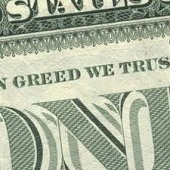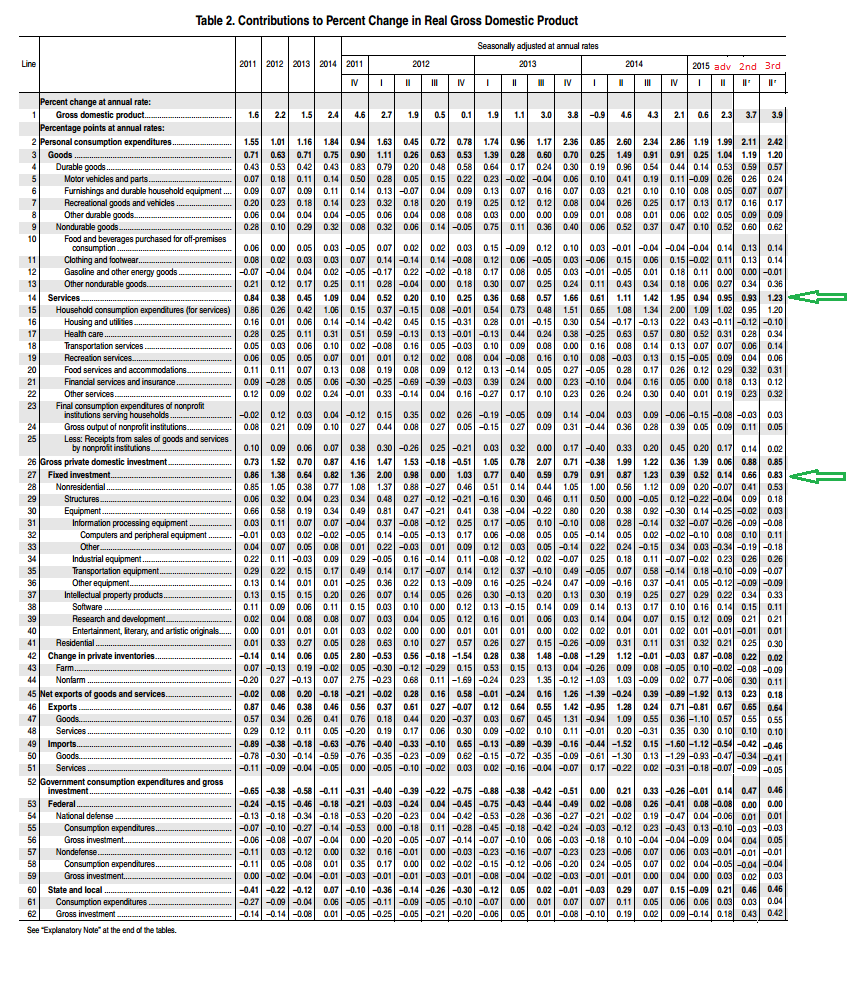Written by Doug Short and Steven Hansen

The third estimate of second quarter 2014 Real Gross Domestic Product (GDP) improved to 3.9 %. This “improvement” was due to personal consumption expenditures (PCE) and nonresidential fixed investment increasing more than previously estimated.
The market expected:
Headline GDP is calculated by annualizing one quarter’s data against the previous quarters data (and the previous quarter was relatively weak in this instance). A better method would be to look at growth compared to the same quarter one year ago. For 2Q2015, the year-over-year growth is 2.7% – down from 1Q2015’s 2.9% year-over-year growth. So one might say that GDP decelerated 0.2 % from the previous quarter.
Real GDP Expressed As Year-over-Year Change

This third estimate released today is based on more complete source data than were available for the “second” estimate issued last month. (See caveats below.)
Real GDP is inflation adjusted and annualized – the economy declined on a per capita basis.
Real GDP per Capita

The table below compares the 1Q2015 GDP (Table 1.1.2) with 2Q2015 GDP which shows:
The arrows in the table below highlight significant differences between the second and third estimates (green is good influence, and red is a negative influence).
[click on graphic below to enlarge]

What the BEA says about the third estimate of GDP:
Real gross domestic product — the value of the goods and services produced by the nation’s economy less the value of the goods and services used up in production, adjusted for price changes — increased at an annual rate of 3.9 percent in the second quarter of 2015, according to the “third” estimate released by the Bureau of Economic Analysis. In the first quarter, real GDP increased 0.6 percent.
The increase in real GDP in the second quarter primarily reflected positive contributions from PCE, exports, nonresidential fixed investment, state and local government spending, and residential fixed investment. Imports, which are a subtraction in the calculation of GDP, increased.
Real GDP increased 3.9 percent in the second quarter, after increasing 0.6 percent in the first. The acceleration in real GDP in the second quarter reflected an upturn in exports, an acceleration in PCE, a deceleration in imports, an upturn in state and local government spending, and an acceleration in nonresidential fixed investment that were partly offset by decelerations in private inventory investment and in federal government spending.










Leave A Comment